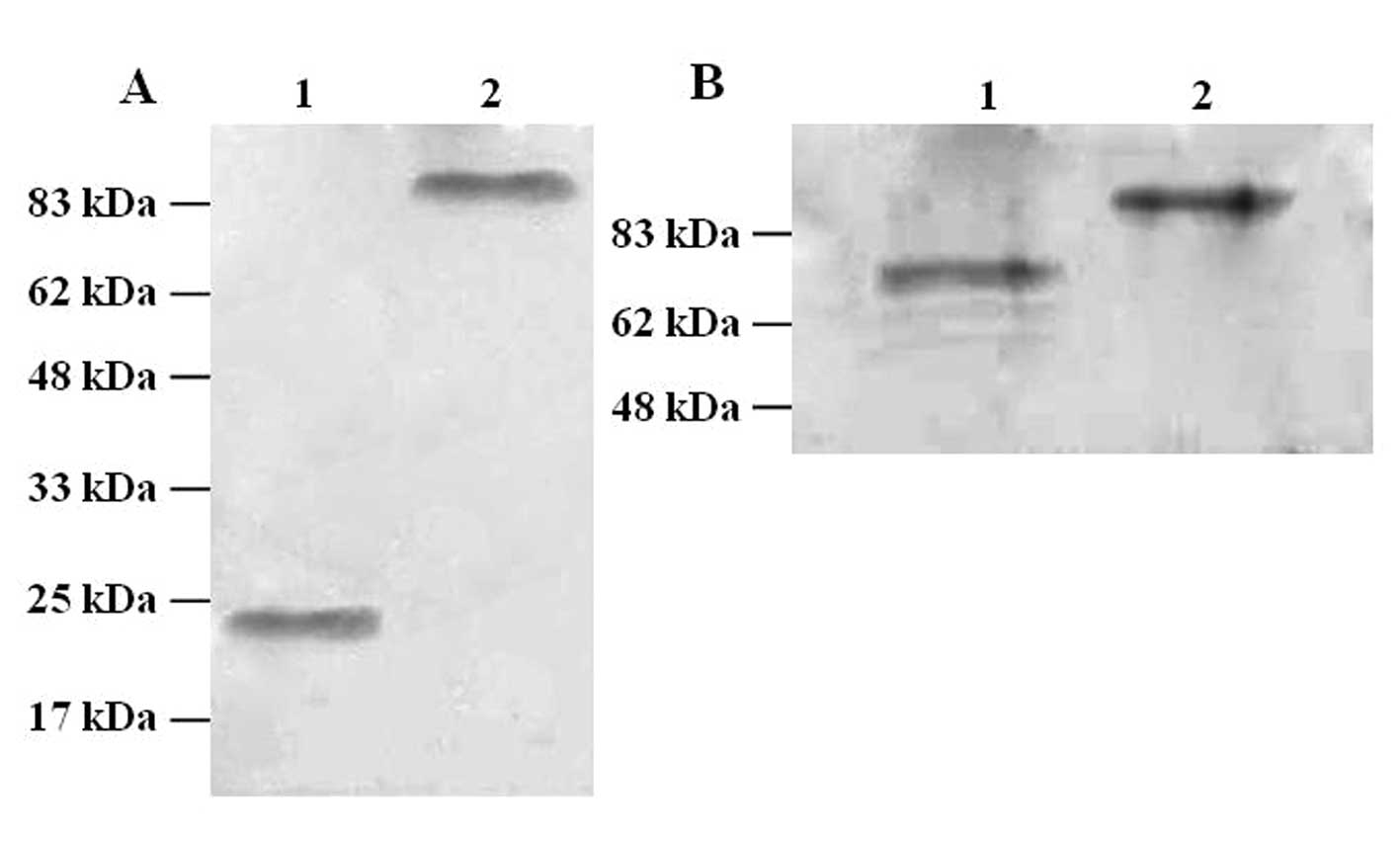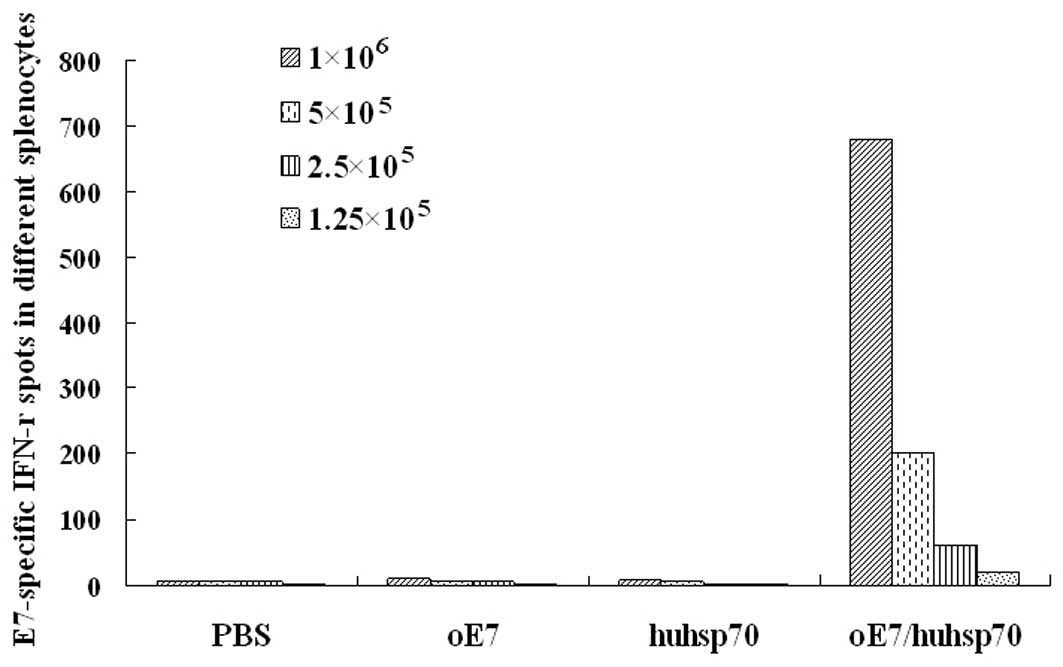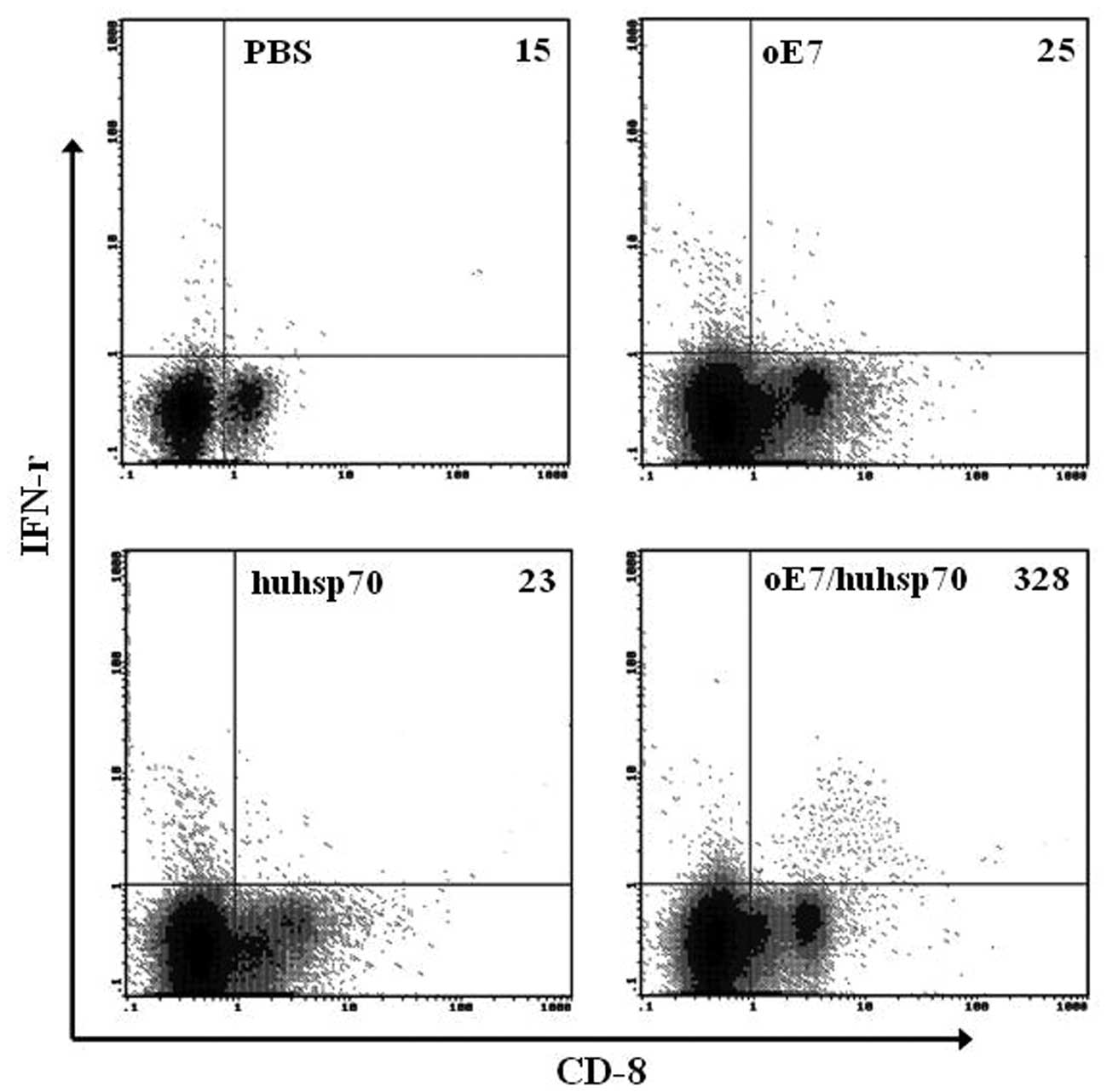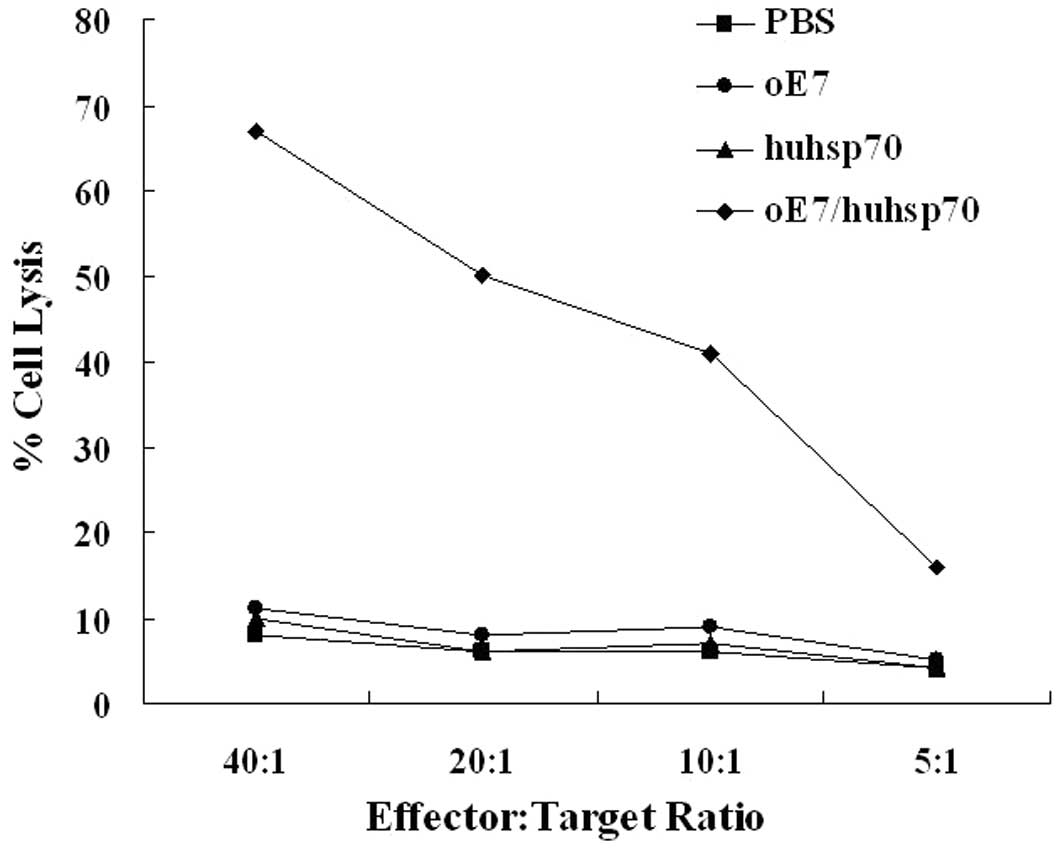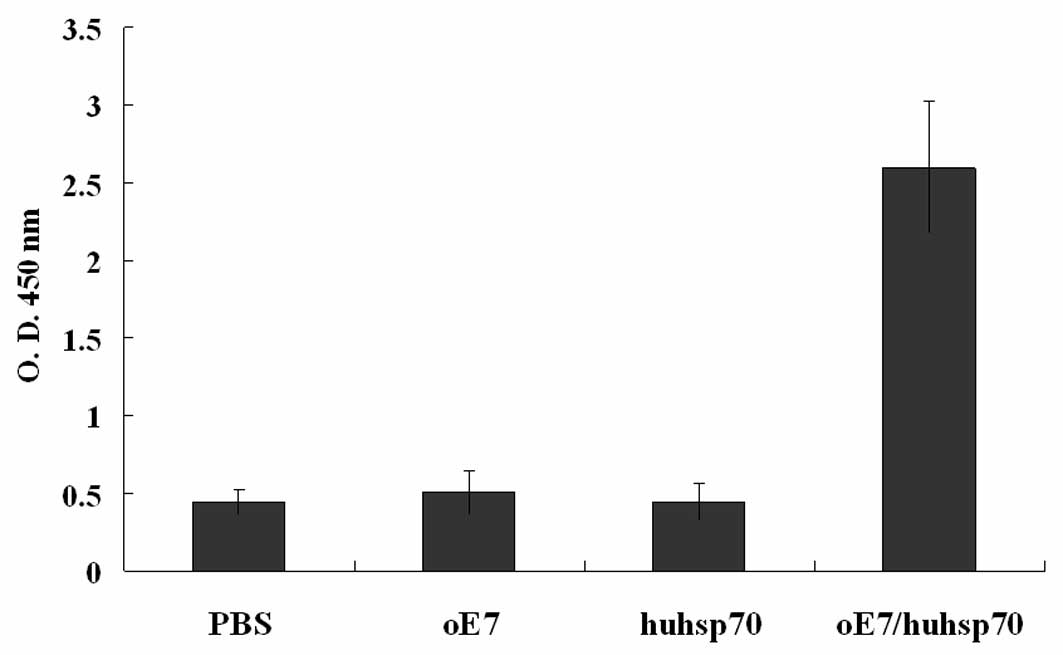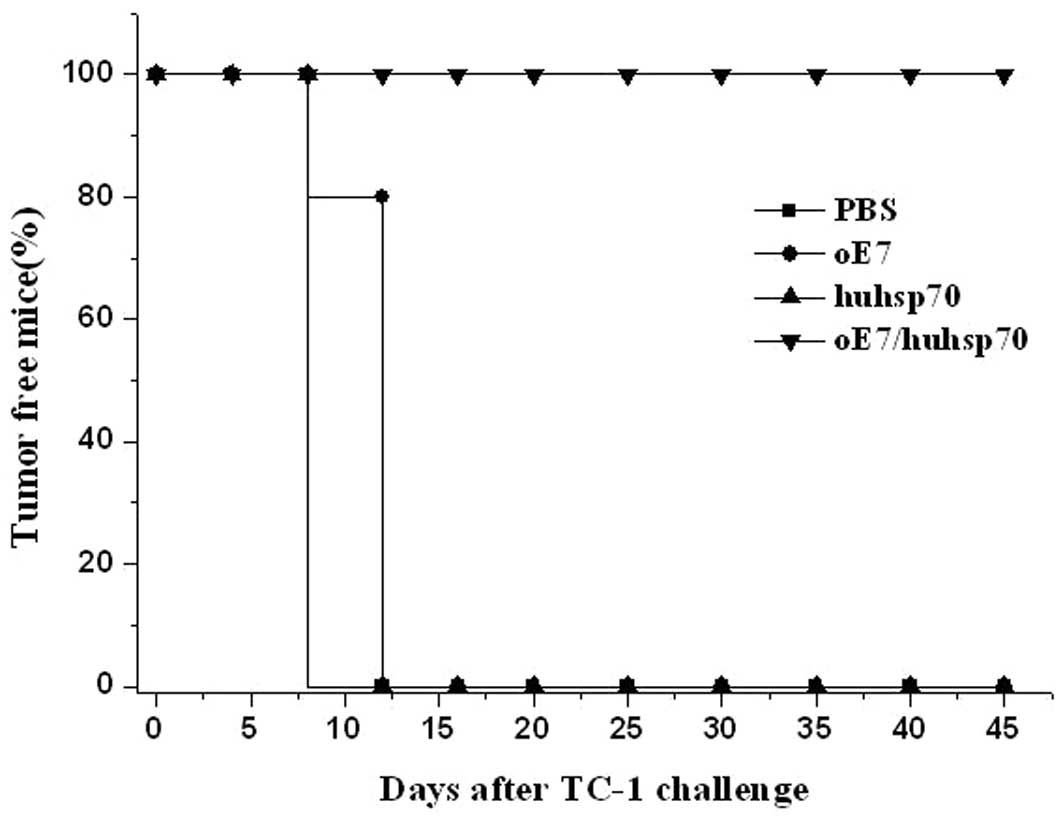|
1
|
Clifford GM, Smith JS, Plummer M, et al:
Human papillomavirus types in invasive cervical cancer worldwide: a
meta-analysis. Br J Cancer. 88:63–73. 2003. View Article : Google Scholar : PubMed/NCBI
|
|
2
|
Siddiqui MA and Perry CM: Human
papillomavirus quadrivalent (types 6, 11, 16, 18) recombinant
vaccine (Gardasil). Drugs. 66:1263–1273. 2006. View Article : Google Scholar : PubMed/NCBI
|
|
3
|
Crosbie EJ and Kitchener HC: Cervarix™-a
bivalent L1 virus-like particle vaccine for prevention of human
papillomavirus type 16- and 18-associated cervical cancer. Expert
Opin Biol Ther. 7:391–396. 2007.
|
|
4
|
Dell G and Gaston K: Human
papillomaviruses and their role in cervical cancer. Cell Mol Life
Sci. 58:1923–1942. 2001. View Article : Google Scholar : PubMed/NCBI
|
|
5
|
zur Hausen H: Papillomaviruses and cancer:
from basic studies to clinical application. Nat Rev Cancer.
2:342–350. 2002.PubMed/NCBI
|
|
6
|
Li YL, Liu J, Liu JN, et al: Immunization
of protein HPV16 E7 in fusion with mouse HSP70 inhibits the growth
of TC-1 cells in tumor bearing mice. Vaccine. 29:5959–5962. 2011.
View Article : Google Scholar : PubMed/NCBI
|
|
7
|
de Vos van Steenwijk PJ, Ramwadhdoebe TH,
Löwik MJ, et al: A placebo-controlled randomized HPV16 synthetic
long-peptide vaccination study in women with high-grade cervical
squamous intraepithelial lesions. Cancer Immunol Immunother.
61:1485–1492. 2012.PubMed/NCBI
|
|
8
|
Zhou L, Zhu T, Ye X, et al: Long-term
protection against human papillomavirus e7-positive tumor by a
single vaccination of adeno-associated virus vectors encoding a
fusion protein of inactivated e7 of human papillomavirus 16/18 and
heat shock protein 70. Hum Gene Ther. 21:109–119. 2010. View Article : Google Scholar
|
|
9
|
Peng S, Monie A, Pang X, et al: Vascular
disrupting agent DMXAA enhances the antitumor effects generated by
therapeutic HPV DNA vaccines. J Biomed Sci. 8:18–21.
2011.PubMed/NCBI
|
|
10
|
Santin AD, Hermonat PL, Ravaggi A, et al:
Induction of human papillomavirus-specific CD4 and CD8 lymphocytes
by E7-pulsed autologous dendritic cells in patients with human
papillomavirus type 16-and 18-positive cervical cancer. J Virol.
73:5402–5410. 1999.
|
|
11
|
Kim D, Hoory T, Wu TC, et al: Enhancing
DNA vaccine potency by combining a strategy to prolong dendritic
cell life and intracellular targeting strategies with a strategy to
boost CD4+ T cell. Hum Gene Ther. 18:1129–1139. 2007.
View Article : Google Scholar : PubMed/NCBI
|
|
12
|
Hauser H and Chen SY: Augmentation of DNA
vaccine potency through secretory heat shock protein-mediated
antigen targeting. Methods. 31:225–231. 2003. View Article : Google Scholar : PubMed/NCBI
|
|
13
|
Ma B, Xu YJ, Hung CF, et al: HPV and
therapeutic vaccines: Where are we in 2010? Curr Cancer Ther Rev.
6:81–103. 2010. View Article : Google Scholar
|
|
14
|
Maecker HT, Ghanekar SA, Suni MA, et al:
Factors affecting the efficiency of CD8+ T cell
cross-priming with exogenous antigens. J Immunol. 166:7268–7275.
2001. View Article : Google Scholar : PubMed/NCBI
|
|
15
|
Bendz H, Ruhland SC, Pandya MJ, et al:
Human heat shock protein 70 enhances tumor antigen presentation
through complex formation and intracellular antigen delivery
without innate immune signaling. J Biol Chem. 282:31688–31702.
2007. View Article : Google Scholar
|
|
16
|
Brodsky JL and Chiosis G: Hsp70 molecular
chaperones: emerging roles in human disease and identification of
small molecule modulators. Curr Top Med Chem. 6:1215–1225. 2006.
View Article : Google Scholar : PubMed/NCBI
|
|
17
|
Calderwood SK, Theriault JR and Gong J:
Message in a bottle: role of the 70-kDa heat shock protein family
in anti-tumor immunity. Eur J Immunol. 35:2518–2527. 2005.
View Article : Google Scholar : PubMed/NCBI
|
|
18
|
Lancaster GI and Febbraio MA:
Exosome-dependent trafficking of HSP70: a novel secretory pathway
for cellular stress proteins. J Biol Chem. 280:23349–23355. 2005.
View Article : Google Scholar : PubMed/NCBI
|
|
19
|
Binder RJ and Srivastava PK: Peptides
chaperoned by heat-shock proteins are a necessary and sufficient
source of antigen in the cross-priming of CD8+ T cells.
Nat Immunol. 6:593–599. 2005.PubMed/NCBI
|
|
20
|
Binder RJ, Blachere NE and Srivastava PK:
Heat shock protein-chaperoned peptides but not free peptides
introduced into the cytosol are presented efficiently by major
histocompatibility complex I molecules. J Biol Chem.
276:17163–17171. 2001. View Article : Google Scholar
|
|
21
|
Tobian AA, Canaday DH, Boom WH, et al:
Bacterial heat shock proteins promote CD91-dependent class I MHC
cross-presentation of chaperoned peptide to CD8+ T cells
by cytosolic mechanisms in dendritic cells versus vacuolar
mechanisms in macrophages. J Immunol. 172:5277–5286. 2004.
View Article : Google Scholar : PubMed/NCBI
|
|
22
|
Delneste Y, Magistrelli G, Gauchat J, et
al: Involvement of LOX-1 in dendritic cell-mediated antigen
cross-presentation. Immunity. 17:353–362. 2002. View Article : Google Scholar : PubMed/NCBI
|
|
23
|
Asea A, Kraeft SK, Kurt-Jones EA, et al:
HSP70 stimulates cytokine production through a CD14-dependent
pathway, demonstrating its dual role as a chaperone and cytokine.
Nat Med. 6:435–442. 2000. View
Article : Google Scholar : PubMed/NCBI
|
|
24
|
Singh-Jasuja H, Scherer HU, Hilf N, et al:
The heat shock protein gp96 induces maturation of dendritic cells
and down-regulation of its receptor. Eur J Immunol. 30:2211–2215.
2000. View Article : Google Scholar : PubMed/NCBI
|
|
25
|
Kuppner MC, Gastpar R, Gelwer S, et al:
The role of heat shock protein (hsp70) in dendritic cell
maturation: hsp70 induces the maturation of immature dendritic
cells but reduces DC differentiation from monocyte precursors. Eur
J Immunol. 31:1602–1609. 2001. View Article : Google Scholar : PubMed/NCBI
|
|
26
|
Zong JB, Peng QL, Wang QY, et al: Human
HSP70 and modified HPV16 E7 fusion DNA vaccine induces enhanced
specific CD8+ T cell responses and anti-tumor effects.
Oncol Rep. 22:953–961. 2009.PubMed/NCBI
|
|
27
|
Van Doorslaer K, Reimers LL, Studentsov
YY, et al: Serological response to an HPV16 E7 based therapeutic
vaccine in women with high-grade cervical dysplasia. Gynecol Oncol.
116:208–212. 2010.PubMed/NCBI
|
|
28
|
Srivastava P: Roles of heat-shock proteins
in innate and adaptive immunity. Nat Rev Immunol. 2:185–194. 2002.
View Article : Google Scholar : PubMed/NCBI
|
|
29
|
Stewart GR and Young DB: Heat-shock
proteins and the host-pathogen interaction during bacterial
infection. Curr Opin Immunol. 16:506–510. 2004. View Article : Google Scholar : PubMed/NCBI
|
|
30
|
Segal BH, Wang XY, Dennis CG, et al: Heat
shock proteins as vaccine adjuvants in infections and cancer. Drug
Discov Today. 11:534–540. 2006. View Article : Google Scholar : PubMed/NCBI
|
|
31
|
Harmala LA, Ingulli EG, Curtsinger JM, et
al: The adjuvant effects of Mycobacterium tuberculosis heat
shock protein 70 result from the rapid and prolonged activation of
antigen-specific CD8+ T cells in vivo. J Immunol.
169:5622–5629. 2002.
|
|
32
|
Li Y, Subjeck J, Yang G, et al: Generation
of anti-tumor immunity using mammalian heat shock protein 70 DNA
vaccines for cancer immunotherapy. Vaccine. 24:5360–5370. 2006.
View Article : Google Scholar : PubMed/NCBI
|
|
33
|
Ma JH, Sui YF, Ye J, et al: Heat shock
protein 70/MAGE-3 fusion protein vaccine can enhance cellular and
humoral immune responses to MAGE-3 in vivo. Cancer Immunol
Immunother. 54:907–914. 2005. View Article : Google Scholar : PubMed/NCBI
|
|
34
|
van Eden W, Koets A, van Kooten P, et al:
Immunopotentiating heat shock proteins: negotiators between innate
danger and control of autoimmunity. Vaccine. 21:897–901.
2003.PubMed/NCBI
|
|
35
|
Rook GA, Martinelli R and Brunet LR:
Innate immune responses to mycobacteria and the downregulation of
atopic responses. Curr Opin Allergy Clin Immunol. 3:337–342. 2003.
View Article : Google Scholar : PubMed/NCBI
|
|
36
|
Salvetti M, Ristori G, Buttinelli C, et
al: The immune response to mycobacterial 70-kDa heat shock proteins
frequently involves autoreactive T cells and is quantitatively
disregulated in multiple sclerosis. J Neuroimmunol. 65:143–153.
1996. View Article : Google Scholar
|



